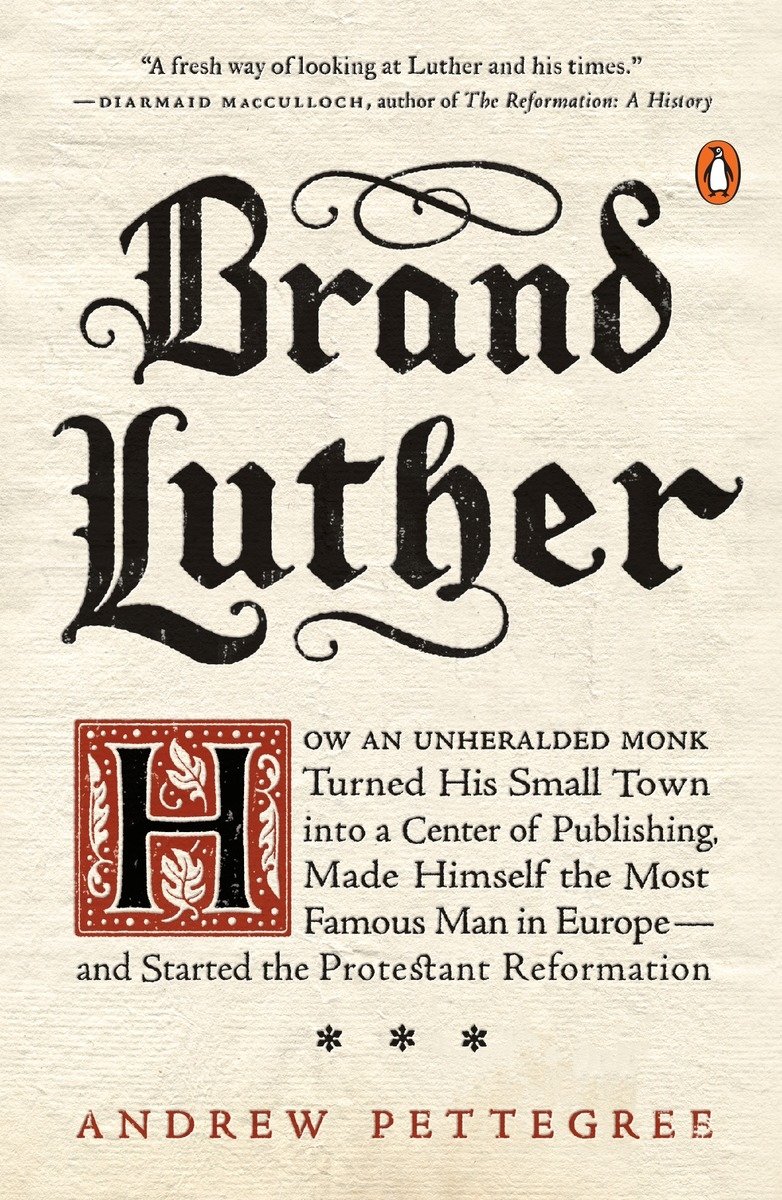A Brief Book Summary from Books At a Glance
By Bruce White
About the Author
Andrew Pettegree is a professor of modern history at the University of St. Andrew, where he was the founding director of the St. Andrews Reformation Studies Institute.
Overview
There was no reason Martin Luther’s 95 theses should have caused the stir that it did. A remarkable set of circumstances had to be in place. Within 5 years of posting the 95 theses, Luther was the most published author in Europe—ever. In 1517, Wittenberg had one poor printing press. Luther not only set off the Protestant Reformation, he also transformed the printing industry. Considering the sixteenth century as a whole, Wittenberg became Germany’s largest printing center—all because of Luther.
Table of Contents
Introduction
- A Small Town in Germany
- The Making of a Revolutionary
- Indulgence
- The Eye of the Storm
- Outlaw
- Brand Luther
- Luther’s Friends
- Reformation in the City
- Partings
- The Nation’s Pastor
- Endings
- Legacy
Summary
Chapter 1: A Small Town in Germany
Wittenberg in 1517 was a city of about 2000 inhabitants, stretching about a half mile long and was the only university city, and the only city of any size, in the province of Frederick the Wise. By Luther’s time, most printing presses were associated with university towns, mainly printing textbooks or scholarly tomes for the universities. Between 1502 and 1516, the press in Wittenberg averaged printing about 8 publications per year. Between 1517 and 1546, six printing houses in Wittenberg turned out 2721 titles, an average of 91 per year. One third of all the publications were written by Luther.
Chapter 2: The Making of a Revolutionary
Luther was born in Eisleben. He was meant to study law and in fact went to university in Erfurt for that purpose. Getting caught in a bad storm and nearly struck by lightning, he cried out to St. Anne to save him, promising to enter the priesthood if she did. He was saved and a few weeks later, he kept his promise. A trip to Rome in 1510, by Luther and another Augustinian monk, left Luther feeling somewhat disillusioned. He witnessed cynical attitudes in the priests there and was shocked to hear jokes about the Eucharist.
In 1512, it was decided that the university needed a printing press, something other important universities had. There was a printing press in the city and previous efforts at making a living with it had failed. The man who was running the press when Luther first came to Wittenberg, Johann Rhau-Gronenberg, worked at his own pace and his quality was poor. However. . .
[To continue reading this summary, please see below....]The remainder of this article is premium content. Become a member to continue reading.
Already have an account? Sign In
Buy the books

Brand Luther: How an Unheralded Monk Turned His Small Town into a Center of Publishing, Made Himself the Most Famous Man in Europe--and Started the Protestant Reformation